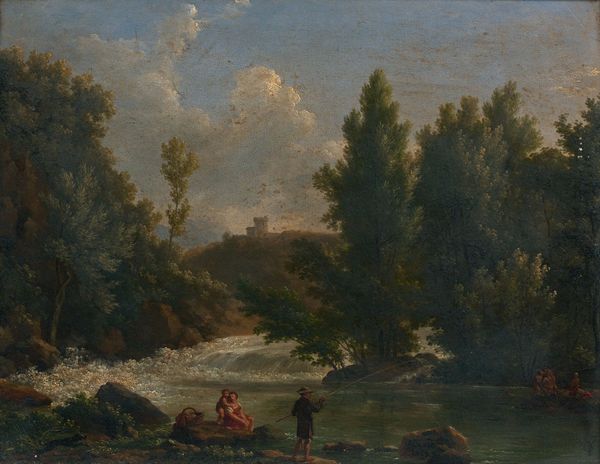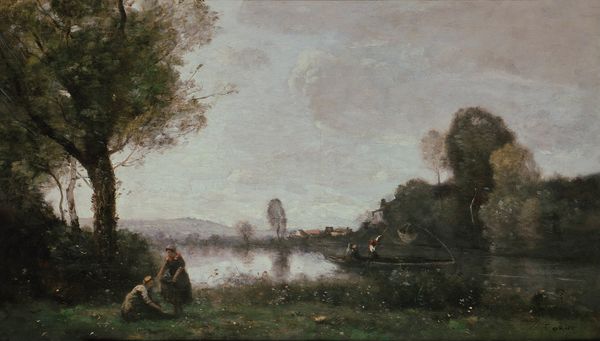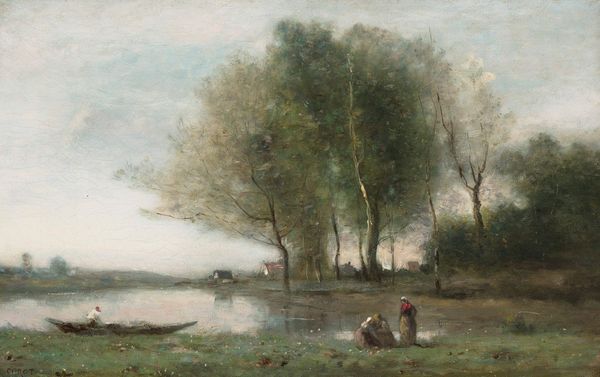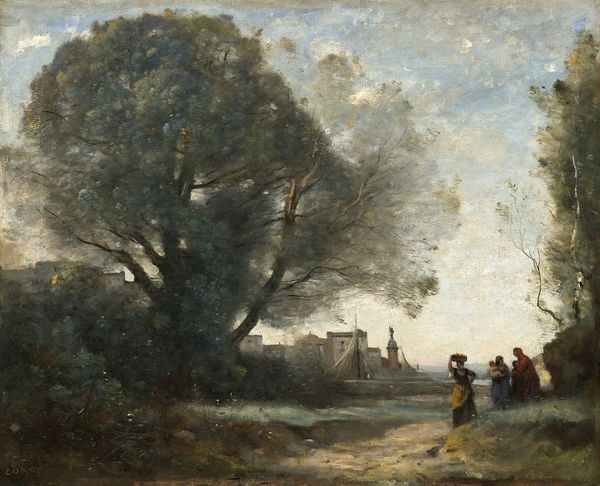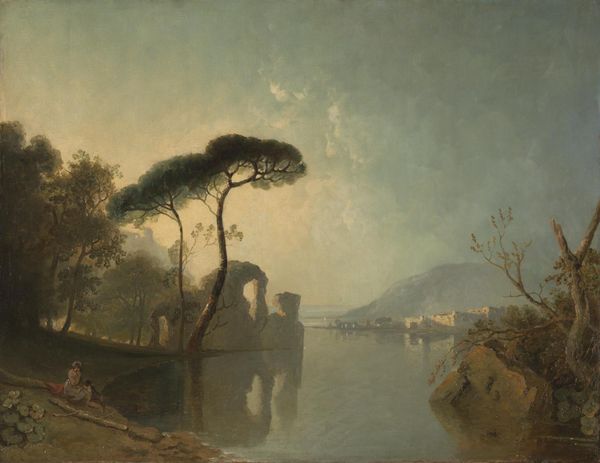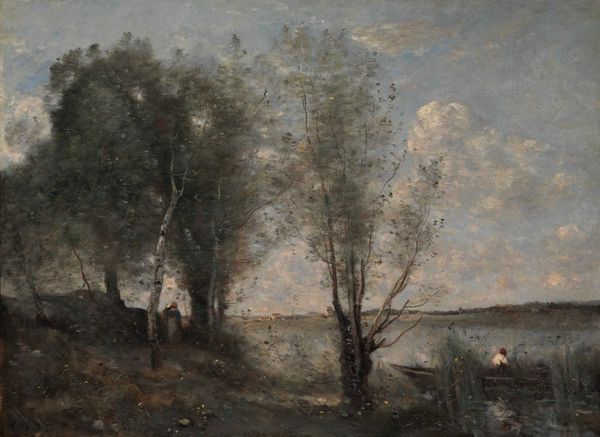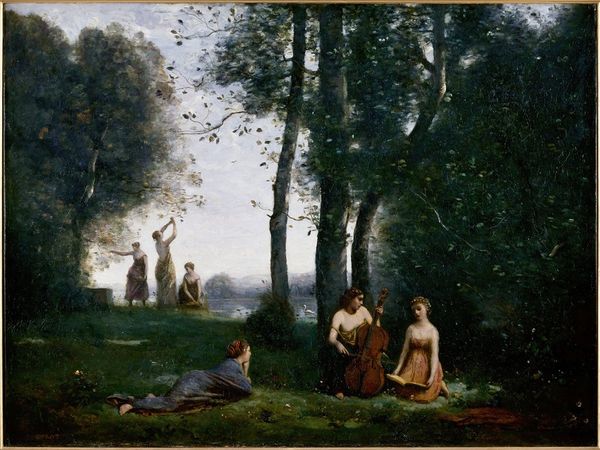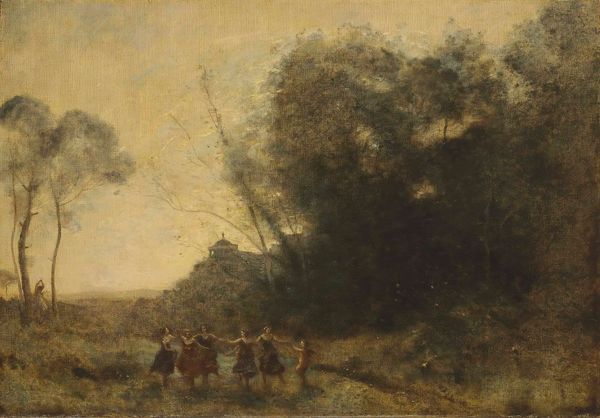
Dimensions: 13 1/8 x 16 1/8 in. (33.34 x 40.96 cm) (canvas)27 x 30 x 5 1/2 in. (68.58 x 76.2 x 13.97 cm) (outer frame)
Copyright: Public Domain
Editor: This is Eugène Fromentin's "Upper Egypt," painted in 1872 using oil on canvas. There’s a stillness in this scene, figures by the water, almost like a photograph capturing a fleeting moment. How do we contextualize this painting within the art world of its time? Curator: Fromentin's work must be viewed within the lens of Orientalism, a fascination with the "East" that was popular in 19th-century Europe, and particularly in France. France, under Napoleon, had actually occupied Egypt a few decades prior. What do you notice about how Fromentin represents the figures? Editor: Well, they seem passive, almost anonymous. They blend into the landscape. Is that a common characteristic of Orientalist paintings? Curator: Precisely. Often, Orientalist works were less about authentic representation and more about constructing an image of the "other" that fit European preconceptions. This idea of passivity you're sensing, contributes to the exoticizing gaze common to this genre, where the orient is often portrayed as static and timeless, and, significantly, available for European consumption. Do you think a title like "Upper Egypt" adds to or challenges this impression? Editor: It feels like it reinforces it, almost like a geographical specimen. Is there a political dimension to this, beyond just cultural fascination? Curator: Absolutely. These images, displayed in salons and reproduced widely, helped to solidify colonial attitudes. They contribute to the idea that European powers had a right, even a duty, to intervene in these regions, an active right and responsibility versus the inactivity or passivity of those that already lived in that place. Editor: So, this painting is not just a landscape; it's a product of its time, embedded in a complex web of colonial power dynamics. Curator: Exactly! It invites us to question not only what we see but *why* we see it in this way. Editor: This reframing helps me look beyond the surface beauty of the piece. Thank you for that. Curator: It highlights the crucial role that art plays in mirroring and shaping socio-political beliefs.
Comments
minneapolisinstituteofart over 1 year ago
⋮
Upper Egypt, a Recollection was one of several Fromentin paintings acquired by James J. Hill in the 1880s. Its subject placidly commemorates the artist’s visit to Cairo in 1869 as part of the official French delegation to the opening of the Suez Canal.
Join the conversation
Join millions of artists and users on Artera today and experience the ultimate creative platform.

